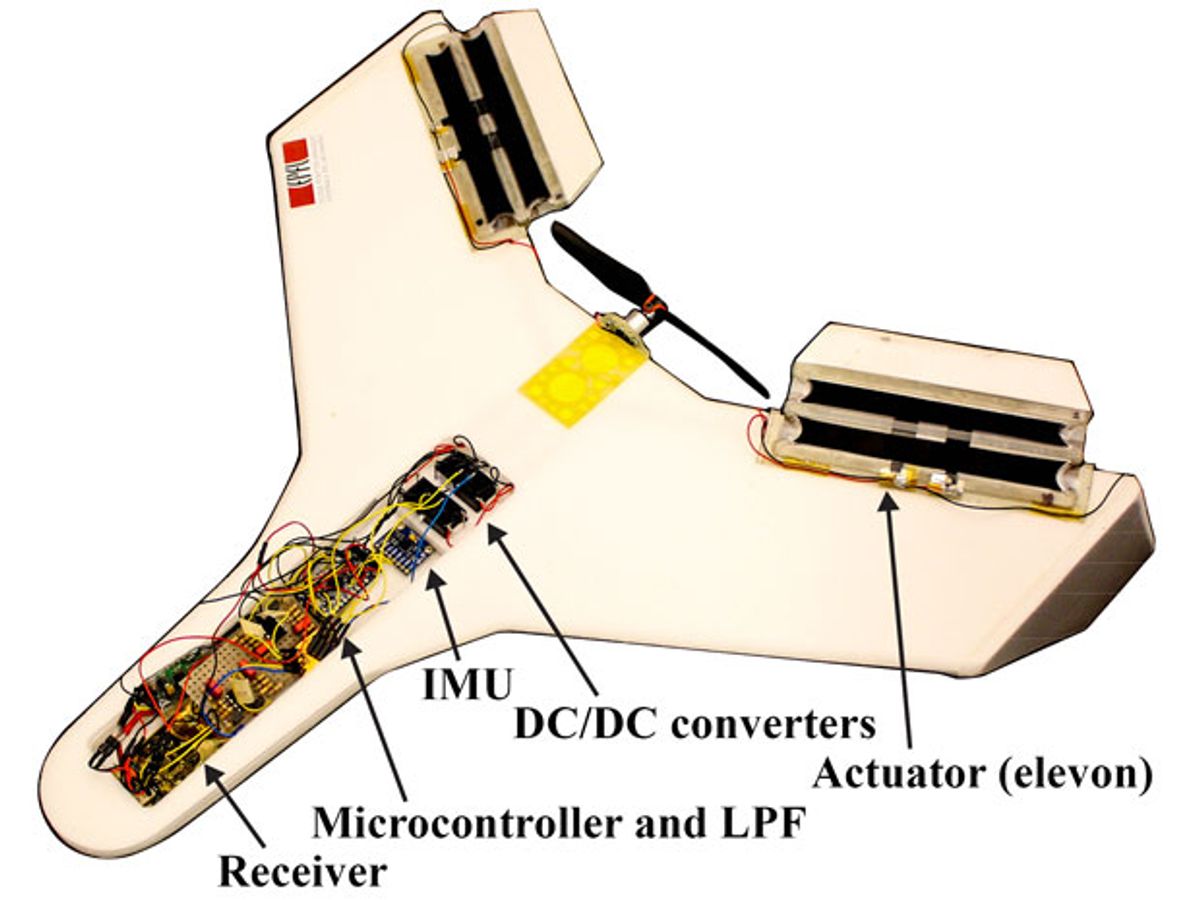Until recently, a defining characteristic of robots has been their rigid mechanical nature. Most of them are made up of hard structural elements, motors and actuators, electronics, sensors, and batteries, none of which are compliant. The future, though, promises to be softer, and we’ve seen lots of different robots that are either partially or completely soft. Soft robots have the potential to be much more adaptable, portable, and durable than rigid robots do, so ideally you’d want them for field applications where there might be a lot of crashing involved. Like UAVs. That would be a good idea, wouldn’t it?
Landing is hard for UAVs. It’s hard for the winged variety especially, since they can’t zero out their horizontal velocity before they hit the ground. Small UAVs can be made out of foam, with mostly integrated components, but they’ve still got fragile external bits that are vulnerable to damage. Namely, the elevons that the wings use for pitch and roll control. The Laboratory of Intelligent Systems at EPFL has developed a UAV that uses dielectric elastomer actuators (DEAs) as elevons: it can fly perfectly well, but the actuators are so compliant that you can literally bend them in half:
Here’s what the researchers have to say about the approach:
We have flown the MAV numerous times and found the DEA actuators allow for excellent controllability of the aircraft, as well as being very resistant to harsh handling.
In case you missed the brief “let’s bend this actuator completely in half” clip in the video, here’s a picture of the entire actuator being bent completely in half:
One advantage of this actuator is the near imperviousness it confers to the aircraft thanks to its inherent softness and stretchability. Or at least, to the elevons. What’s potentially more exciting (I think) is the potential to make an aircraft that can be folded up and stuffed into a bag, or even into a pocket, and then pulled out and tossed into the air whenever you need it.
DEAs aren’t a new thing, even if this particular implementation is a novel one. EPFL has also adapted them for other robotic applications, like this adorable little gripper:
“A Foldable Antagonistic Actuator,” by Jun Shintake, Samuel Rosset, Bryan Schubert, Dario Floreano, and Herbert Shea from EPFL, will be published in a forthcoming issue of IEEE Transactions on Mechatronics.
[ EPFL ]
Evan Ackerman is a senior editor at IEEE Spectrum. Since 2007, he has written over 6,000 articles on robotics and technology. He has a degree in Martian geology and is excellent at playing bagpipes.




